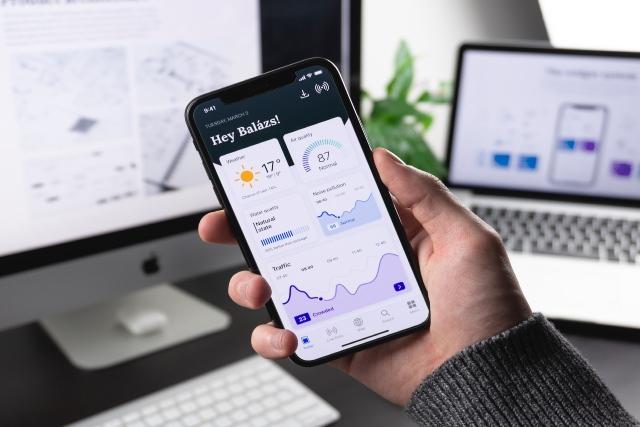As a user, you may often judge many apps based on their visual appeal and ease of use. Humans are visual beings, and they’re quick to decide whether they’ll use an app based on how it looks and feels. The user interface is, therefore, a vital aspect of any app. The right design can make apps easier and fun to use, which can make a huge difference to their success.
The relevance of UX and UI design will only increase as time moves forward because it has already become one of the deciding factors for users. More businesses recognize the importance of UI and UX, hiring an app design company to ensure quality results. This explains why UX and UI designers are in high demand lately.
The Evolving Trends in Mobile App UI Design
Mobile app UI design has evolved alongside technological advancements to meet growing user needs. Adopting the latest trends as per user preferences is essential to remain competitive and thrive in the digital domain, so you should know what they are in 2023:
Dark Mode
Dark mode is a design trend that gained widespread popularity in the last few years. It allows users to switch from the traditional light-colored UI to a darker interface. Mobile apps that offer a dark mode option provide users with a customizable and comfortable experience. They also save battery and lower eye strain, making them useful for the device and users.
Accessibility and Inclusivity
Inclusive design is an essential consideration in modern mobile app UI design. Ensuring that the app is accessible to users with disabilities is not only morally right, but also expands the potential user base.
Try thinking of this from the perspective of people with physical challenges. They still want to use the app, but can’t because they can’t see the screen or touch the buttons. By incorporating features like voice commands, screen readers, and larger touch targets, designers can make the app usable and enjoyable for all users, regardless of their abilities.
Gesture-Based Navigation
This type of navigation has become more prevalent with the increasing screen size of smartphones. This trend replaces traditional navigation buttons with intuitive gestures like swiping, pinching, and tapping.
Gesture-based navigation streamlines the user interface, maximizing the screen real estate for content. An experienced UI/UX design company can help you make the most of gesture-based features based on the devices you’re targeting.
Augmented Reality (AR)
We all love using apps that bring the virtual and real worlds together. AR technology has transformed how users interact with mobile apps. Several mobile app designing services have grown capable of integrating AR elements into the UI design. As a result, they can enhance user engagement and create immersive experiences.
From trying on virtual clothes to visualizing furniture in a room, AR adds a new dimension to mobile app interactions. Users also prefer apps that go beyond simple perusal and bring the element of immersion into the mix.
Personalization and AI-driven UI
Personalization is the key to delighting users. It shows the users that their preferences matter and are being addressed by the business. They are more likely to be loyal to a brand this way.
AI-driven UI designs can analyze user behavior and preferences, offering personalized content and recommendations. By tailoring the app experience to individual users, businesses can foster stronger connections and increase user retention.
Optimizing Mobile App UI Design for Long-Term Results
Apart from providing an excellent user experience, mobile app UI design can also impact search engine optimization (SEO) and app store rankings. Here are some steps you can follow to enhance your app’s visibility and gain great results in the long run:
- Optimize app title and description: Choose a relevant and keyword-rich app title that clearly conveys its purpose. Craft a compelling description that highlights the app’s features and benefits, incorporating relevant keywords naturally.
- Screenshots and app previews: Visual content is essential in convincing users to download an app. Include high-quality screenshots and engaging app previews that showcase the app’s interface and functionality.
- Responsive design for all devices: Make your app’s UI design is responsive and adapts seamlessly to different screen sizes and orientations. A consistent experience across devices can positively impact user satisfaction and rankings.
- Focus on app reviews and ratings: Positive app reviews and high ratings can significantly influence app store rankings. Encourage users to leave reviews and respond to feedback promptly to improve your app’s reputation.
- Page load speed and performance: Optimize your app’s UI elements and assets for faster loading times. A well-performing app is more likely to rank higher in app stores and receive better user reviews.
Final Thoughts
A UX or user interface designer, especially one who’s part of an established app design company, is perfectly capable of shaping the future of design. You simply cannot ignore their ability to influence the direction of digital experience and their role in user satisfaction.
That said, design won’t matter much if there’s no one to appreciate it. In other words, you’ll have to work on the app’s visibility, so potential users can easily find it. Therefore, optimizing the app is important, and the tips above will help you supplement their efforts for consistent, high-quality results.



